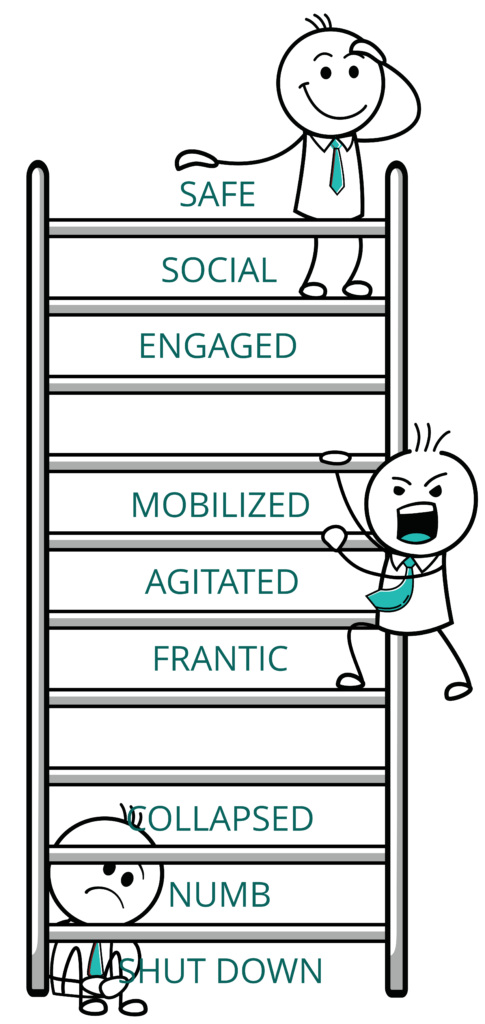Trauma & The Autonomic Ladder
Trauma can have a significant impact on the nervous system. The body has different ways of responding to stress and danger, which are controlled by different parts of the nervous system. When we experience trauma, it can disrupt these normal responses and lead to problems such as anxiety, depression, and difficulty regulating emotions. For example, trauma can cause the body to become stuck in a “fight or flight” response, which can lead to feelings of constant fear and hypervigilance. On the other hand, it can also cause the body to shut down, leading to feelings of numbness or dissociation. Understanding how trauma affects the nervous system can be helpful in developing effective treatments.
The Autonomic Ladder is a concept used describe the different levels of response that our body can have to stress and danger. The ladder has three main rungs, each representing a different level of response controlled by different parts of the nervous system. The top rung represents the “social engagement” system, which allows us to engage with others in a calm and regulated manner. The middle rung represents the “fight or flight” system, which activates when we perceive a threat and prepares us for action. The bottom rung represents the “freeze or collapse” system, which activates when the threat is overwhelming and we are unable to fight or flee. When we experience trauma, it can cause our body to become stuck in one of these responses, leading to difficulties in regulating emotions and interacting with others. Understanding the autonomic ladder can help individuals and therapist to understand the different responses to stress and trauma.
“Understanding the autonomic ladder can help individuals and therapist to understand the different responses to stress and trauma.”

Derian Julihn
Registered Clinical Counsellor

